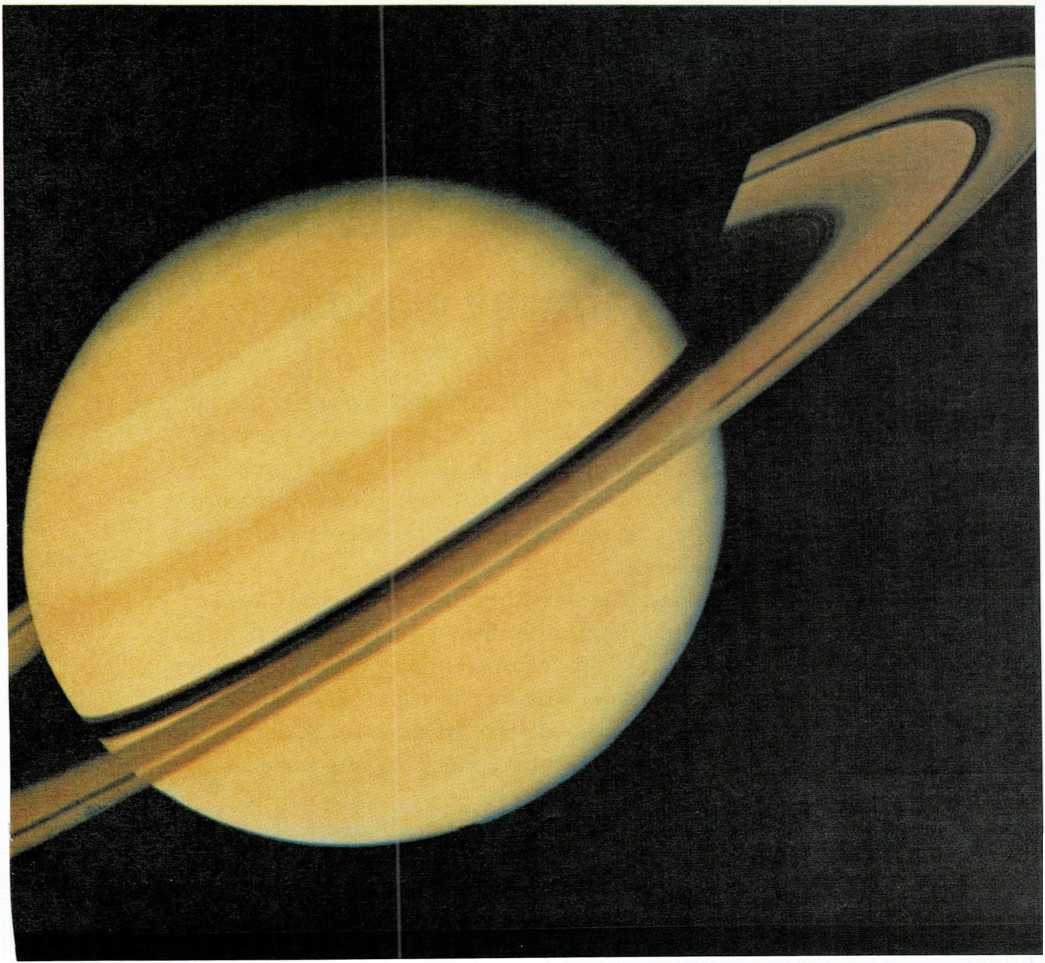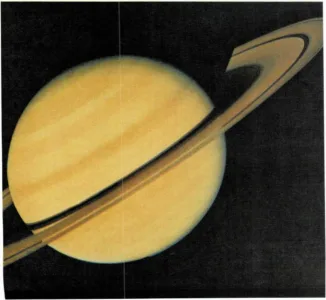A many-ringed planet
The sixth planet from the sun is Saturn. It is the second largest
planet—nearly ten times bigger than the earth. Saturn is named after
the Roman god of farming. It has a rocky center, probably covered by a
thin layer of liquid, and is surrounded by thick clouds of gas. Big as
it is, Saturn isn’t even as thick or heavy as a ball of water the same
size. In fact, if there were an ocean big enough to hold it, Saturn
would float!
Saturn is surrounded by seven flat rings, one inside the other. These
rings are made up of thousands of narrow ringlets. The rings are formed
of billions of pieces of ice, from tiny specks to very large
“snowballs.” The bits of ice circle around Saturn just as the moon
circles the earth. Scientists think these bits are either material left
over when Saturn was formed, or the remains of an icy moon that broke
up.
Beyond its rings, Saturn has eighteen moons. Most of them are chunks of
ice mixed with rock. They range in size from less than 25 miles (40
kilometers) wide to more than 3,000 miles (4,800 kilometers) wide. The
largest moon, Titan, is bigger than the earth’s moon and has a thick,
cloudy atmosphere.
Saturn is about 885 million miles (1.4 billion kilometers) from the sun.
Its year is almost 30 earth- years long, and its day is about 101/2
hours.
Scientists used the space probes Voyager 1 and Voyager 2 to study
Saturn. The information from the two probes helped them find nine of
Saturn’s moons and prove that Saturn had a seventh ring.



